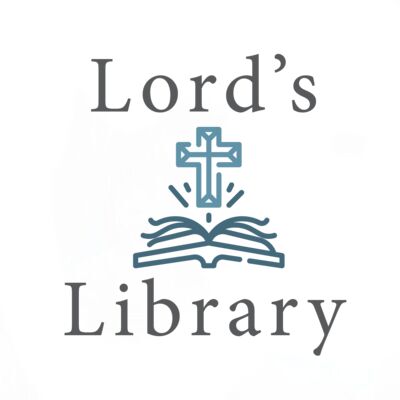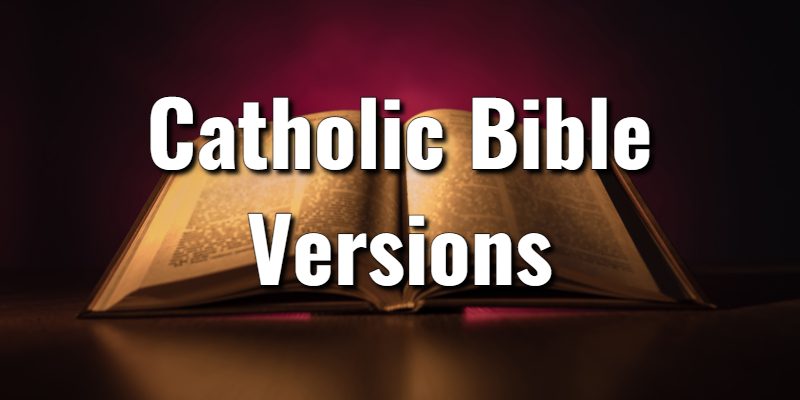Lord’s Library editors compiled this resource to help Christians understand the different Catholic Bible versions.
The basis of Catholic doctrine comes from what the Church calls “Apostolic Succession.” They believe that Jesus appointed the first bishops, who then appointed bishops themselves, and so on and so forth until the bishops present today. This tradition is invaluable to them as they are able to trace their leadership all the way back to Jesus Himself. That’s precisely why this Apostolic tradition, alongside the Bible, forms the basis of their doctrine. Also noteworthy is that the Catholic Bible contains 73 books instead of the typical 66 that Protestants are accustomed to.
For a Bible version to be approved for use by the Catholic Church, it must have three things. First, it must have an official Church certification that determines the translation is not objectionable on doctrinal or moral grounds. Second, it must have official approval by the clergy, most commonly done by a bishop. Also, it must contain the entire biblical canon according to the Catholic tradition of incorporating the Apocrypha as part of the official Bible canon.
The following is a complete list of Bible translations approved by the United States Conference of Catholic Bishops. These Bible versions are generally approved abroad as well.
Catholic Bible Versions Comparison List

Catholic Churches must make use of one of these approved Bible translations for liturgical use. In the rare cases where this doesn’t happen, the church is either corrected by their governing diocese or granted special permission to use a different version to meet a specific need.
While these versions are the only ones approved for liturgical use, you will see a lot more flexibility in the personal Bible study of many Catholic individuals. Many Catholic believers will read or study the Bible from a multitude of different translations. The liturgical side is more strictly guarded.
There are some different Catholic Sects that have considered other biblical texts canon. The Bible of the Tewahedo Churches differs from the Western and Greek Orthodox Bibles in the order, naming, and chapter/verse division of some of the books. The Ethiopian “narrow” biblical canon includes 81 books altogether: The 27 books of the New Testament; the Old Testament books found in the Septuagint and that are accepted by the Eastern Orthodox (more numerous than the Catholic deuterocanonical books); and in addition Enoch, Jubilees, 1 Esdras, 2 Esdras, Rest of the Words of Baruch and 3 books of Ethiopian Maccabees (Ethiopian books of Maccabees entirely different in content from the 4 Books of Maccabees of the Eastern Orthodox). A “broader” Ethiopian New Testament canon includes 4 books of “Sinodos” (church practices), 2 “Books of Covenant”, “Ethiopic Clement”, and “Ethiopic Didascalia” (Apostolic Church-Ordinances). This “broader” canon is sometimes said to include with the Old Testament an 8-part history of the Jews based on the writings of Titus Flavius Josephus, known as “Pseudo-Josephus” or “Joseph ben Gurion.”
The Church uses the Bible versions it does because they fit with the history, theologies, and traditions of the Catholic Church. Also, a big point that can’t be missed is the inclusion of the Apocryphal books. Those books are considered canon by the Catholic Church, so they would not authorize the use of a Bible translation that didn’t include them.
Let’s take the New International Version for example. There exists no version of the NIV Bible that includes the Apocryphal books. Just by this fact alone, it is disqualified from use in the Catholic Church. That may seem extreme to some, but since the Catholics hold those books as biblical canon, it would be like removing the Gospel of John from a Protestant Bible.
Catholic Bible vs. Protestant Bible
The biggest difference between Catholic and Protestant Bibles comes down to the inclusion or removal of the books that came to be known as the Apocrypha. To understand these books, we must take a brief look at their history and what exactly they are.
Bibles used by Catholics differ in the number and order of books from those typically found in bibles used by Protestants, as Catholic bibles retain in their canon seven books that are regarded as non-canonical in Protestantism (though regarding them as non-canonical, many Protestant Bibles traditionally include these books and others as an intertestamental section known as the Apocrypha, totaling to an 80 book Bible. As such, its canon of Old Testament texts is somewhat larger than that in translations used by Protestants. On the other hand, its canon is shorter than that of some churches of Eastern Orthodoxy, which recognize other books as sacred scripture as well.
The traditional books of the Old Testament Apocrypha (200 B.C.) were composed before Christ and the apostles and as late as A.D. 100. The Apocrypha is actually growing as discoveries of additional books are found. The latest additions to the Old Testament Apocrypha are the Apocalypses of Ezra and Baruch. The traditional Old Testament Apocrypha contains the following fourteen books.
- 1 Esdras
- 2 Esdras
- Tobit
- Judith
- Esther
- Additions to The Wisdom of Solomon
- Ecclesiasticus
- Baruch
- The Song of the Three Holy Children
- The History of Susanna
- Bel and the Dragon
- The Prayer of Manasseh
- 1 Maccabees
- 2 Maccabees
All of the canonical Old Testament books are quoted by Christ or one of the New Testament books as Scripture, except for Ezra, Nehemiah, Esther, Song of Solomon, Lamentations, Obadiah, Nahum, and Zephaniah (Matthew 5:17; 23:35; Luke 24:44). But the Old Testament Apocrypha is never quoted. Some of the early church fathers quoted these books, but none of the church councils did, barring the Council of Trent.
The Council of Trent of A.D. 1546 adopted the Old Testament Apocrypha as scripture and included it in the Bible. The Council of Trent was the first official proclamation of the Roman Catholic Church on the Apocrypha, coming about a millennium and a half after the books were written in a response to Protestantism.
It should also be noted that the 1611 King James Version Bible does include the Old Testament Apocrypha, but it is separated from the canonical books. It’s interesting to note that there are other Old Testament Apocryphal books such as the following: Prayer of Manasseh and Psalm 151. These are included in some different sects of Catholicism as well as Eastern Orthodoxy.
Lord's Library participates in affiliate programs. We may make a small commission from products purchased through this resource.
- What Does the Bible Say About Achievements? With Key Scriptures - April 11, 2025
- What does the Bible Say About Abortion? With Key Scriptures - April 11, 2025
- Prosperity Gospel Meaning in the Scriptures: Is it Biblical? - April 7, 2025













